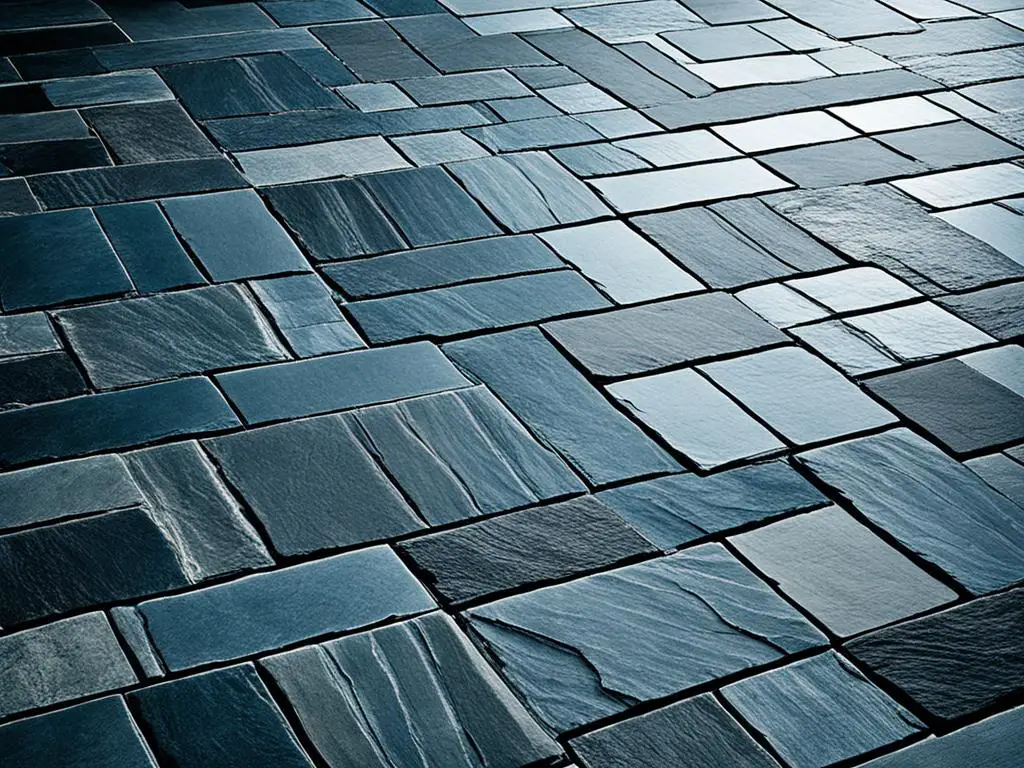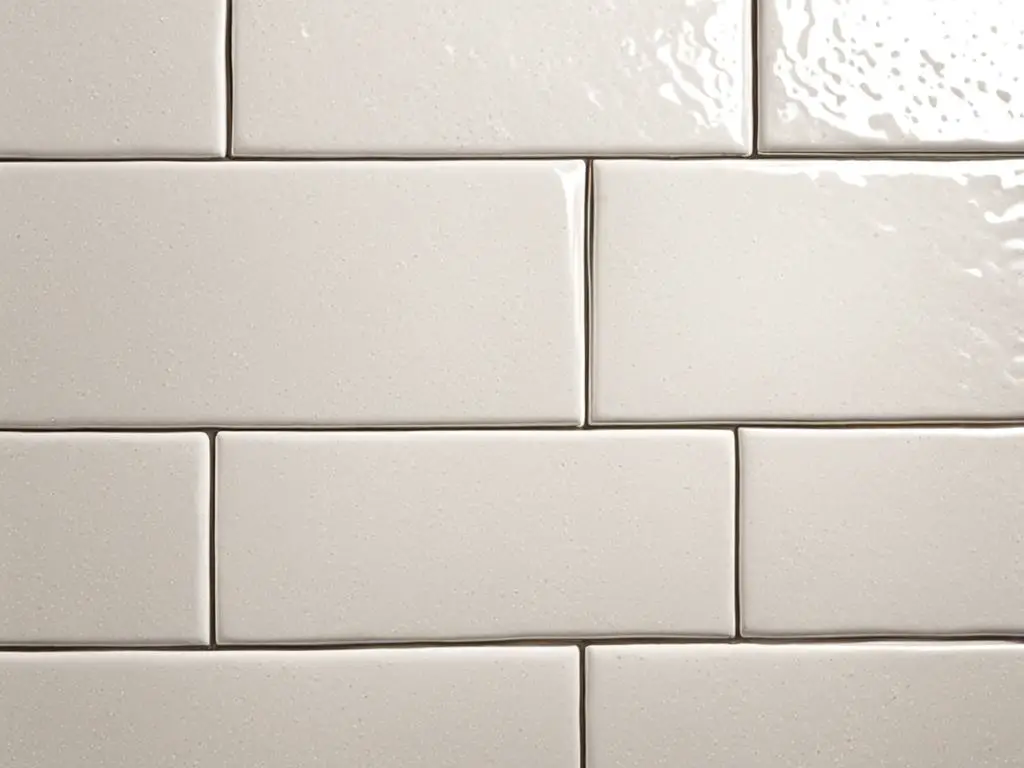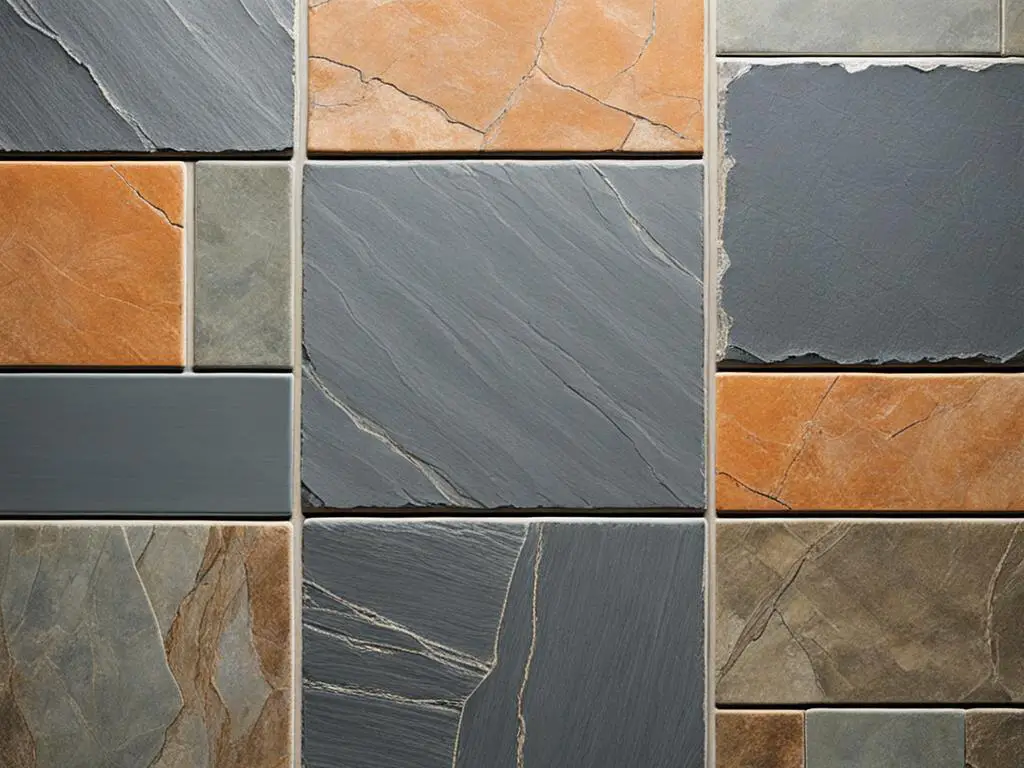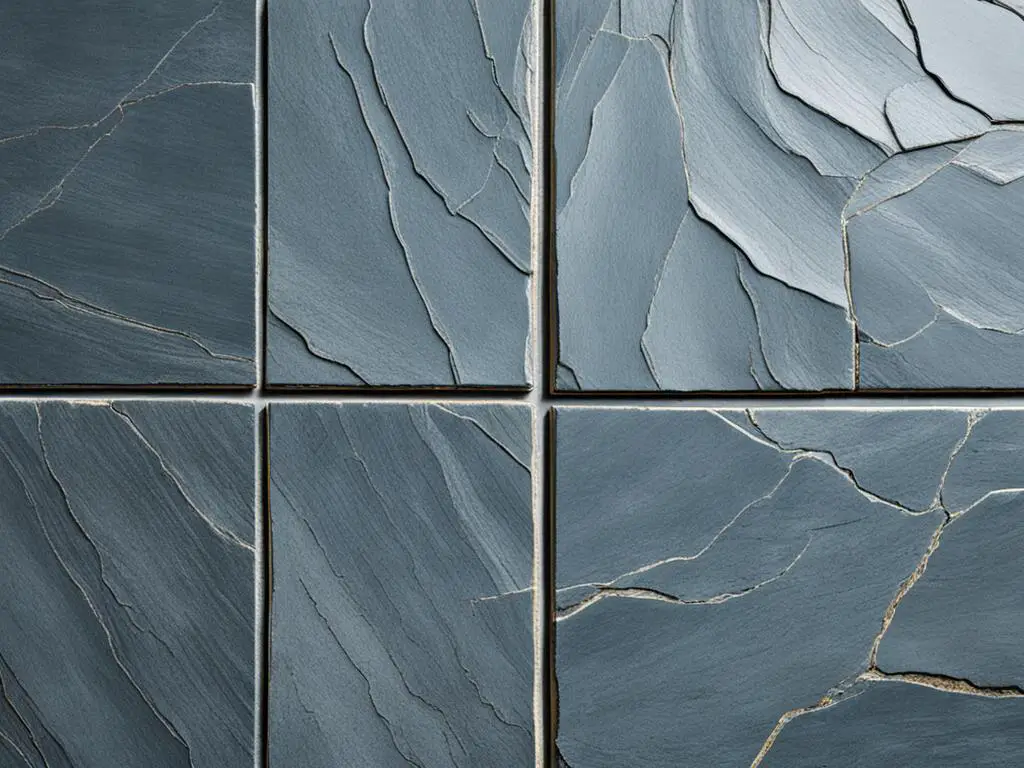Choosing the right flooring material is crucial to achieve the perfect look and feel for your space. When it comes to selecting between slate and ceramic tile, it’s important to understand the pros and cons of each option. In this article, we will compare slate and ceramic tile, highlighting the differences, the benefits, and the drawbacks of each. Whether you are looking for natural stone elegance or versatile design options, this comparison will help you make an informed decision for your flooring needs.
Key Takeaways:
- Slate is a natural stone with a unique and rugged beauty, while ceramic tile is man-made and offers versatile design options.
- Slate is more expensive and requires regular sealing for stain prevention, whereas ceramic tile is more affordable and easier to maintain.
- Slate tile is highly durable but can be challenging to repair or replace, while ceramic tile is durable and DIY-friendly for installation.
- Consider factors such as cost, desired aesthetic, maintenance requirements, and durability when choosing between slate and ceramic tile.
- Ultimately, the decision between slate and ceramic tile depends on individual preferences and the specific needs of the space.
Pros and Cons of Slate Tile
When it comes to choosing flooring materials, slate tile is a popular option due to its unique and attractive appearance. Each tile is natural and one-of-a-kind, adding a touch of elegance and character to any space. However, like any other material, slate tile has its pros and cons that should be considered before making a decision.
Pros of Slate Tile:
- Slate tile offers a truly distinctive look with its natural variations in color and texture. No two tiles are exactly alike, creating a visually appealing and one-of-a-kind flooring option.
- Durability is another major advantage of slate tile. It is highly resistant to cracks and scratches, making it suitable for high-traffic areas. With proper maintenance, slate tile can last for decades.
- For those who value energy efficiency, slate tile is compatible with radiant heat systems. This feature allows for efficient heating of the floor, providing warmth and comfort during colder months.
Cons of Slate Tile:
- One of the drawbacks of slate tile is its high cost compared to other flooring materials. The unique beauty and durability of slate come at a price, making it a more expensive option upfront.
- In case of damage, repairing or replacing slate tiles can be challenging and costly. The natural variations in color and texture make it difficult to find an exact match for replacement tiles.
- Regular sealing is necessary to prevent stains on slate tile. The porous nature of the material makes it susceptible to absorption of liquids and stains if left unsealed. This maintenance requirement adds to the overall care and upkeep of slate tile.
- The grout lines between slate tiles can also be vulnerable to staining and require maintenance to keep them clean and in good condition.

Pros and Cons of Ceramic Tile
When it comes to flooring options, ceramic tile offers a range of advantages and disadvantages. Let’s explore the pros and cons of using ceramic tile as a flooring material.
Benefits of Ceramic Tile
- Versatile Design: Ceramic tile comes in a wide range of colors, patterns, and styles, allowing for endless possibilities in floor design. Whether you prefer a classic or modern look, ceramic tile can be customized to suit your aesthetic preferences.
- Durability: Ceramic tile is known for its durability, making it suitable for high-traffic areas in both residential and commercial spaces. With a high PEI rating (Porcelain Enamel Institute), ceramic tile can withstand daily wear and tear, resisting scratches and maintaining its appearance for years to come.
- Easy Maintenance: Ceramic tile is relatively low-maintenance compared to other flooring materials. It is easy to clean with regular sweeping and mopping. Additionally, ceramic tile is resistant to stains and does not absorb odors, making it a hygienic choice for kitchens and bathrooms.
Drawbacks of Ceramic Tile
- Porosity: While glazed ceramic tile is non-porous, unglazed ceramic tile can be porous and prone to staining. To prevent discoloration, unglazed ceramic tile requires sealing to maintain its appearance and protect against moisture absorption.
- Installation Complexity: While ceramic tile installation can be a DIY project for those with experience, it requires precision and attention to detail. Professional installation may be necessary for complex layouts and to ensure proper leveling and grout placement.
To visually illustrate the pros and cons of ceramic tile, refer to the table below:
| Pros of Ceramic Tile | Cons of Ceramic Tile |
|---|---|
| Versatile design options | Porosity of unglazed tiles |
| Durability in high-traffic areas | Complexity of installation |
| Low-maintenance and easy to clean |
Overall, ceramic tile offers many benefits such as versatile design options, durability, and easy maintenance. However, it is important to consider the porosity of unglazed ceramic tile and the complexity of installation when deciding if it is the right flooring choice for your space.

Differences between Slate and Ceramic Tile
Slate and ceramic tile have distinct differences. Slate is a natural stone formed over millions of years, resulting in a unique and rugged beauty that adds a touch of elegance to any space. On the other hand, ceramic tile is man-made and offers a wide range of colors and patterns, allowing for versatile design options. Let’s explore the characteristics that set these two types of tiles apart.
Characteristics of Slate Tile
Slate, being a natural stone, possesses certain qualities that make it stand out. Here are some key characteristics of slate tile:
- Formation: Slate is a result of sedimentary rock being subjected to high pressure and heat, resulting in its distinct layered structure.
- Natural variations: Each slate tile is unique, with its own variations in color, texture, and markings, adding character and depth to any installation.
- Durability: Slate is known for its durability and resistance to cracks and scratches, making it a long-lasting flooring option.
- Sealing requirement: Slate is a porous material and requires regular sealing to prevent stains and maintain its appearance.
- High-end appeal: The natural beauty and high-end aesthetic of slate make it a popular choice among homeowners looking for a luxurious flooring option.
Characteristics of Ceramic Tile
Ceramic tile, being manufactured, brings its own set of characteristics to the table. Here are some notable characteristics of ceramic tile:
- Man-made: Ceramic tile is made from a mixture of clay, minerals, and water, which are shaped and fired to produce the final product.
- Color and pattern options: Ceramic tile offers a wide range of colors, patterns, and designs, making it a versatile option for various aesthetic preferences and design styles.
- Affordability: Ceramic tile is generally more affordable than natural stone options like slate, making it a budget-friendly choice.
- Ease of maintenance: Ceramic tile is easy to clean and maintain. Regular sweeping and mopping are usually sufficient to keep it looking its best.
- Durability: While not as durable as slate, ceramic tile can still withstand regular wear and tear, especially if it has a high PEI (Porcelain Enamel Institute) rating.
Overall, the choice between slate and ceramic tile depends on various factors, such as budget, desired aesthetic, and maintenance preferences. If you’re looking for a natural, high-end option with unique variations, slate may be your best choice. On the other hand, if versatility, affordability, and ease of maintenance are your priorities, ceramic tile might be the better option for you.

Considerations for Choosing Between Slate and Ceramic Tile
When deciding between slate and ceramic tile for your flooring, several factors should be taken into consideration to make an informed choice that aligns with your needs and preferences. Here are some key considerations to keep in mind:
1. Overall Design and Aesthetic Impact
The design of your space and the desired aesthetic impact should play a significant role in your decision-making process. Slate tile offers a unique and natural look, with each tile being distinct and one-of-a-kind. It can add a sense of elegance and sophistication to any room. On the other hand, ceramic tile provides versatile design options with a wide range of colors, patterns, and finishes. It can be used to achieve various styles, from traditional to contemporary, and even replicate the look of slate.
2. Cost of Flooring
The cost of the flooring, including both the material and installation, is an essential factor to consider. Slate tile is generally more expensive than ceramic tile due to its natural stone composition and unique characteristics. Ceramic tile, on the other hand, is more budget-friendly and cost-effective. It provides a more affordable option without compromising on durability and design flexibility.
3. Maintenance and Durability
Maintenance and durability are crucial factors to evaluate when choosing between slate and ceramic tile. Slate tile is highly durable and can last for decades with proper care. It is resistant to cracks and scratches, making it suitable for high-traffic areas. However, slate requires regular sealing to protect it from stains and liquids. On the other hand, ceramic tile is also durable, especially if it has a high PEI rating. It is easy to clean and maintain, requiring minimal effort.
4. Installation Considerations
Consider the installation process when deciding between slate and ceramic tile. Slate tile installation can be more complex and may require professional assistance. It is important to ensure precise placement and structural considerations for optimal results. Ceramic tile, on the other hand, can be DIY-friendly depending on the complexity of the project. However, professional installation is still recommended to ensure proper alignment and long-lasting results.
| Considerations | Slate Tile | Ceramic Tile |
|---|---|---|
| Unique and natural look | Yes | No |
| Versatile design options | No | Yes |
| Cost | Higher | Lower |
| Maintenance | Regular sealing required | Low maintenance |
| Durability | High | High (depending on PEI rating) |
| Installation | Complex, may require professional assistance | DIY-friendly, but professional installation recommended |
Consider all these factors to make an informed decision that suits your budget, desired look, maintenance preferences, and installation requirements.
Conclusion
In conclusion, when deciding between slate and ceramic tile for your flooring needs, it’s important to consider a variety of factors. These factors include your budget, desired aesthetic, maintenance preferences, and the level of durability required.
Slate offers a unique and high-end look with its natural and one-of-a-kind appearance. However, it comes with a higher price tag and requires regular maintenance, including sealing, to prevent stains. On the other hand, ceramic tile provides a more affordable and versatile option. It comes in a wide range of colors and patterns, allowing for versatile design possibilities. Ceramic tile is also easier to maintain, especially if it has a high PEI rating.
Ultimately, the decision should be based on your individual needs and preferences. Consider the overall design of the space, the cost of the flooring, the level of maintenance you’re willing to undertake, and the desired durability. By carefully evaluating these factors, you can make an informed decision and choose the best flooring option, whether it’s slate or ceramic tile, for your specific space.
FAQ
What are the pros and cons of slate tile?
The pros of slate tile include its unique and attractive appearance, durability, and compatibility with radiant heat systems. However, the cons include its high cost, difficulty in repairing or replacing damaged tiles, and the need for regular sealing to prevent stains.
What are the pros and cons of ceramic tile?
The pros of ceramic tile include its affordability, wide range of color and pattern options, durability, and ease of maintenance. However, unglazed ceramic tile is porous and requires sealing to prevent staining.
What are the differences between slate and ceramic tile?
Slate is a natural stone with a unique and rugged beauty, while ceramic tile is man-made and comes in various colors and patterns. Slate is generally more expensive and requires sealing to prevent stains, while ceramic tile is more affordable and easier to clean.
What factors should I consider when choosing between slate and ceramic tile?
Factors to consider include the desired aesthetic, cost, maintenance requirements, durability needed, and the ease of DIY installation versus professional installation.



